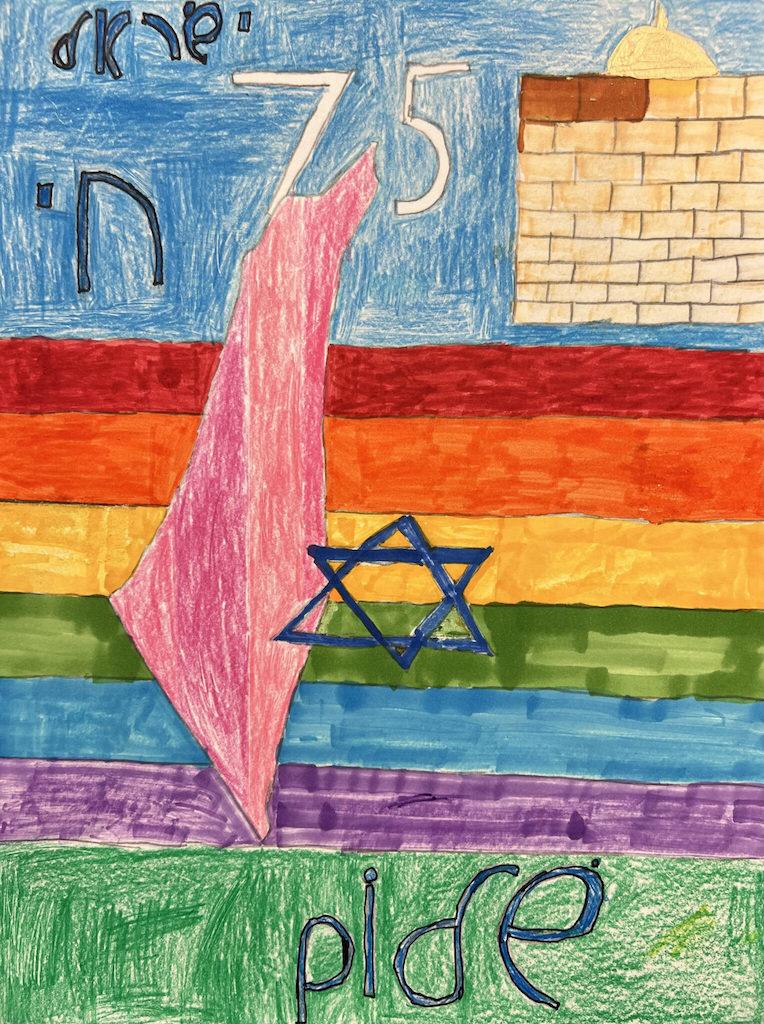Artist's Statement:
(Gershom B. - Age 11)
“The subject of my Zionist poster is inclusion because the Zionist dream is for a Jewish state where every Jew can be themselves. First the Jewish pride flag is the center of the picture. I included the Islamic mosque and the Kotel to represent inclusion of all religions. The words on it are Israel, life, and peace. The outline of the state of Israel is in the pride flag, and the pink in Israel symbolizes how Israel supports LGBTQ+ people.”
Source:
https://israeled.org/contest-results-2023/
_________________________________________________________
Grades 6-8
Zionist Poster
Jewish institutions in both pre-state Palestine and post-independence Israel have produced hundreds of posters, usually to inform the public of national initiatives and to garner support for national policies. Much like symbols and anthems, these posters have fostered a stronger sense of Jewish nationalism and engendered pride in the endeavor to establish and preserve self-determination in the Land of Israel. These posters provide a unique perspective on the challenges and achievements of the Jewish people over time. Look at the posters below and consider these questions:
1. What is the main topic? Where can you see the main topic (words, people modeling desired behaviors, symbols)? Why is this topic important to Jewish state-building, self-determination and/or state-keeping?
2. Who designed the poster and for whom? How can you tell for whom the poster is intended (language, imagery, symbolism)?
3. What is the historical context? How do events or circumstances of the time affect the poster’s design? What is the need for and purpose of the poster in its time period?
4. How is content presented? Which symbols are used? Are they unusual or typical? Are they complex or simple? How do symbols connect to the main topic of the poster? Are they of religious, national, social or other significance? What can be inferred from the use of symbols about the views, intentions and interests of the creator? How are colors used? What is in the foreground and the background, and why is this important? If there are people in the poster, how are they dressed? What are their facial expressions? What are they doing? Why are they significant? If there are words, in what language? What is their role? Are the words from Jewish religious sources, or are they in the common language of the time? What are the connections between the words and the imagery?
5. Why is the message significant? Is the poster impactful? Does its design contribute to its message and purpose? How do you think this poster influenced the target audience? How does the poster compare with others of the same time or topic?
You can see more examples at https://catalog.archives.gov.il/publication/crazot/.
Source:
https://israeled.org/contest/

